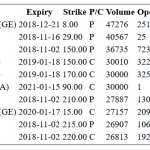
There are three things that will command investors’ attention in the week ahead.The first, and most important, is whether the global capital markets will continue to move toward stability after the hugedrama over the past week or two. The instability appears to have shaken the confidence of some Fed officials and market participants that a September lift-off is the most likely scenario.
Our assessment of the technical condition of the market is that the panic is over, some capitulation was seen, and equities, interest rates, and currencies took a big step toward returning to status quo ante in the second half of last week. We recognize the technical condition as a reflection of market psychology. It is as if Mr. Market was shaken out of its melodramatic response with an ostensibly refreshing slap. While the precipitous drop of the magnitude we experienced was indeed scary on many levels, the system showed a comforting resilience, both operationally and psychologically.
The markets had not reached the point of breakdown in which everyone was forced to be short-term traders. Speculators capitulated (e.g., the gross short yen futures position were slashed by more than 37k contracts, which in percentage terms is the biggest short squeeze in three years). Margin calls were made. Yet there were medium and longer-term investors that recognized the exaggerated sell-off as a new opportunity. The break of dramatic momentum was able to feed on itself. Those short-term momentum traders then were forced to cover
The second is the ECB meeting. The updated staff forecasts will likely point to slower growth and less price pressures than had been expected in the June forecasts. Rather than end early as some had previously speculated, the ECB’s asset purchases may be increased. This could happen through increasing the monthly amount from the current 60 bln euros, or it could extend beyond September 2016.
It seems unreasonable to expect any such announcement now. ECB President Draghi is likely to emphasize the flexible nature of its asset purchases. Draghi has often cautioned that the cyclical upswing would be contained by the lack of structural reforms. Also, financial conditions have become somewhat less accommodating.
On a trade-weighted basis, the euro has risen by 4.7% since March, and most of it has been recorded since the middle of July. Indeed, since July 6, the euro has been the strongest of the major currencies. European equity markets have continued to surrender the year’s earlier impressive gains.












Leave A Comment